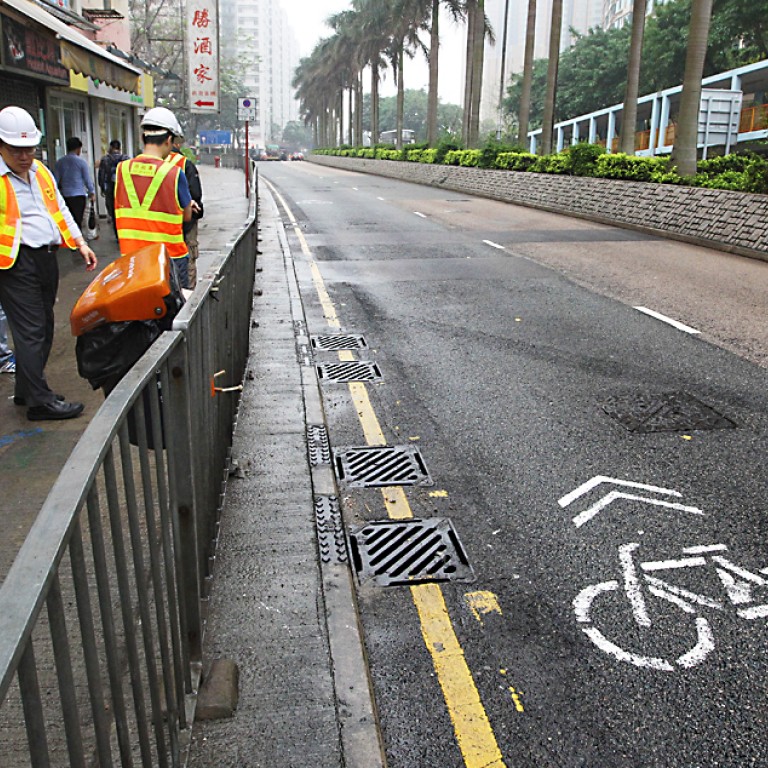
New cycle lane in Hung Hom … but not for long
'Cycle lane' signs that have appeared in Hung Hom are not the real thing
For a moment, cyclists on Hung Hom South Road might have thought one of their dreams had finally come true: cycle lanes on urban roads.
No such luck.
No one is quite sure who made the mysterious markings, which appeared on Wednesday. But one thing is certain: it wasn't the government. And the Transport Department says it will remove the markings from the road as soon as possible.
The markings - two chevrons and an image of a bicycle - are used in countries such as the United States and Canada to indicate lanes that can be shared equally by cars and cycles.
Known as sharrows - a shared lane marked by arrows - such markings are placed by governments and sometimes, as in Los Angeles in 2008, by cyclists impatient for more riding space.
Hong Kong Cycling Alliance chairman Martin Turner said the group had no idea who had made the six markings in Hung Hom, but hoped they could become a part of the campaign to push the government to grant more cycling facilities in the city.
"When a government fails to provide bike-friendly infrastructure, people make markings on the road themselves," he said. "Sometimes, authorities may keep them as they see they work."
Turner said it was "surprising" to see the markings, because "generally Hong Kong people tend to work within the rules".
Shopkeepers on Hung Hom South Road said they were also in the dark as to who had made the sharrows. A woman working at a hardware store in the area said she first spotted the markings on Wednesday morning.
The Transport Department said it would remove them "as soon as possible". Anyone found to have made unauthorised road markings or signs faces a HK$1,000 fine and a three-month jail term, a spokeswoman said.
Hong Kong is ranked the best place in the world for people to travel around, but it falls behind when it comes to cycling paths, according to a recent study by consultancy firm Arthur D. Little.
Its cycle-path density was the lowest of the top 11 cities. Hong Kong has 187 kilometres of cycle paths for every 1,000 square kilometres of land, compared with 4,041 in Stockholm, 3,502 in Amsterdam and 280 in Singapore.
